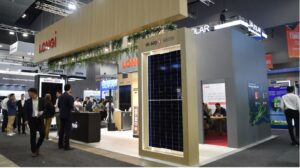PRESS RELEASE
Australia’s tidal energy resource will be mapped in unprecedented detail in a new study funded by the Commonwealth Government through the Australian Renewable Energy Agency (ARENA).

ARENA has provided $2.49 million in funding support for the three year project which will explore the future potential of tidal energy in Australia to attract future investment.
The $5.85 million project – Tidal Energy in Australia – Assessing Resource and Feasibility in Australia’s Future Energy Mix – will be led by the Australian Maritime College at the University of Tasmania, in partnership with CSIRO, the University of Queensland and industry partners.
The project will create an online atlas mapping tidal energy nationwide to the nearest 500 metres. The project will also involve a full feasibility study of two high potential sites, and modelling of existing tidal energy devices at these sites.
Tidal energy is generated by harnessing the movement of tides. Tides contain both potential energy, related to the vertical fluctuations in sea level, as well as kinetic energy, related to ocean currents. A modern tidal generator works much like an underwater wind turbine, harnessing the current created by the tide.
ARENA Chief Executive Officer Ivor Frischknecht said this project will help to unlock the potential of tidal energy to contribute to Australia’s energy needs.
“This research will help Australia to better understand tidal energy and help to maximise renewable energy into the market,” Mr Frischknecht said.
“Ocean energy technologies are in their early stages of development. With ARENA’s help, we hope to see exciting steps forward being made in understanding the benefits of tidal energy.”
Lead researcher Associate Professor Irene Penesis said this survey will overcome current barriers to investment in commercial scale tidal farms in Australia.
“With some of the largest tides in the world, Australia is ideal for this extremely reliable and low carbon form of energy,” said Associate Professor Penesis.
“But potential investors are currently held back by a lack of detailed information on tidal resources that would help them understand the risks and opportunities available.”
“This project will address this knowledge gap and provide the information that developers need to deploy their technology in the most energetic tidal sites in Australia.”
Four industry partners OpenHydro, Protean Wave Energy, MAKO Tidal Turbines and BioPower Systems will make financial contributions and provide the researchers with proprietary information on their tidal energy devices, as well as commercial implementation knowhow.
Michael Lewis, Business Development Manager at international marine turbine company OpenHydro, a DCNS Energies company, said the project will help the tidal energy industry in Australia match advances seen internationally.
“We believe this project will create an environment in which we can deliver commercially viable tidal energy projects in Australia, helping the country move forward in the development of a tidal energy industry.”
The project will also benefit from collaboration with international researchers from Acadia University, Canada, and Bangor University, UK, both of which are at the forefront of global developments in tidal energy.
Tidal energy is the last major renewable energy resource to be mapped as part of the Australian Renewable Energy Mapping Initiative funded by ARENA.
ARENA has previously funded marine energy studies, including the Australian Wave Energy Atlas led by CSIRO.
The data produced by this research may also be used for a range of other purposes, such as environmental management, shipping, defence, oil and gas exploration and offshore wind and wave energy.
The project will deliver:
- Tidal resource map: development of a national scale hydrodynamic tidal model to map the scale and distribution of the nation’s tidal energy resources to the nearest 500 metres. The results will be published in an online resource atlas.
2. Full feasibility assessment of highpotential sites: focussed case studies at two highpotential sites including field measurements, hydrodynamic modelling and environmental impact assessment. - Technical and economic feasibility assessment: development of an economic case for connecting highpotential sites to Australia’s electricity infrastructure, with consideration of national grid, endofgrid and offgrid application.
For further information, visit amc.edu.au and arena.gov.au










